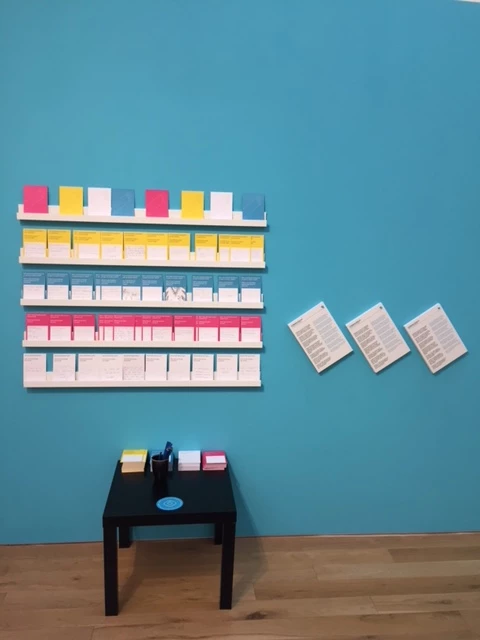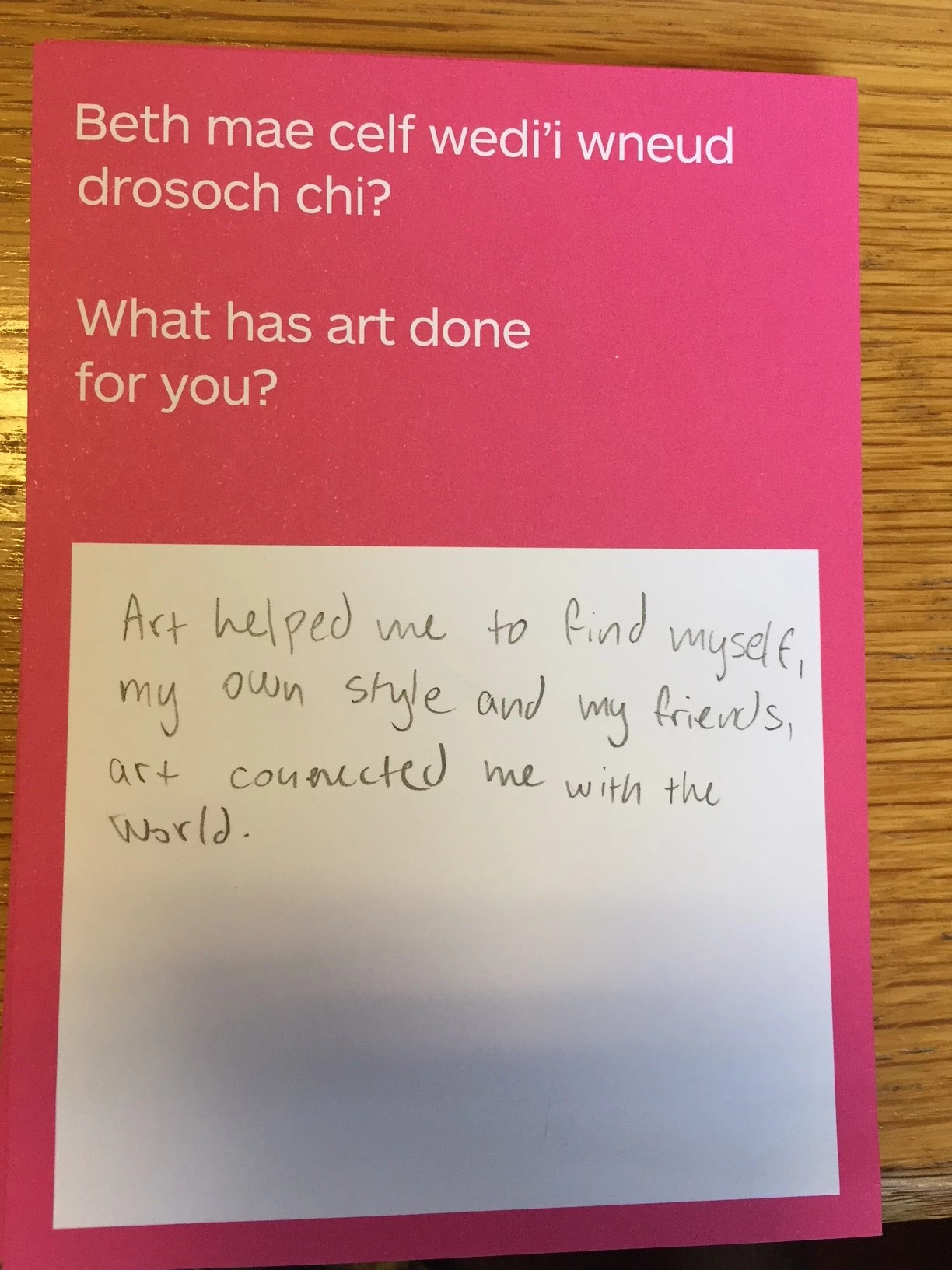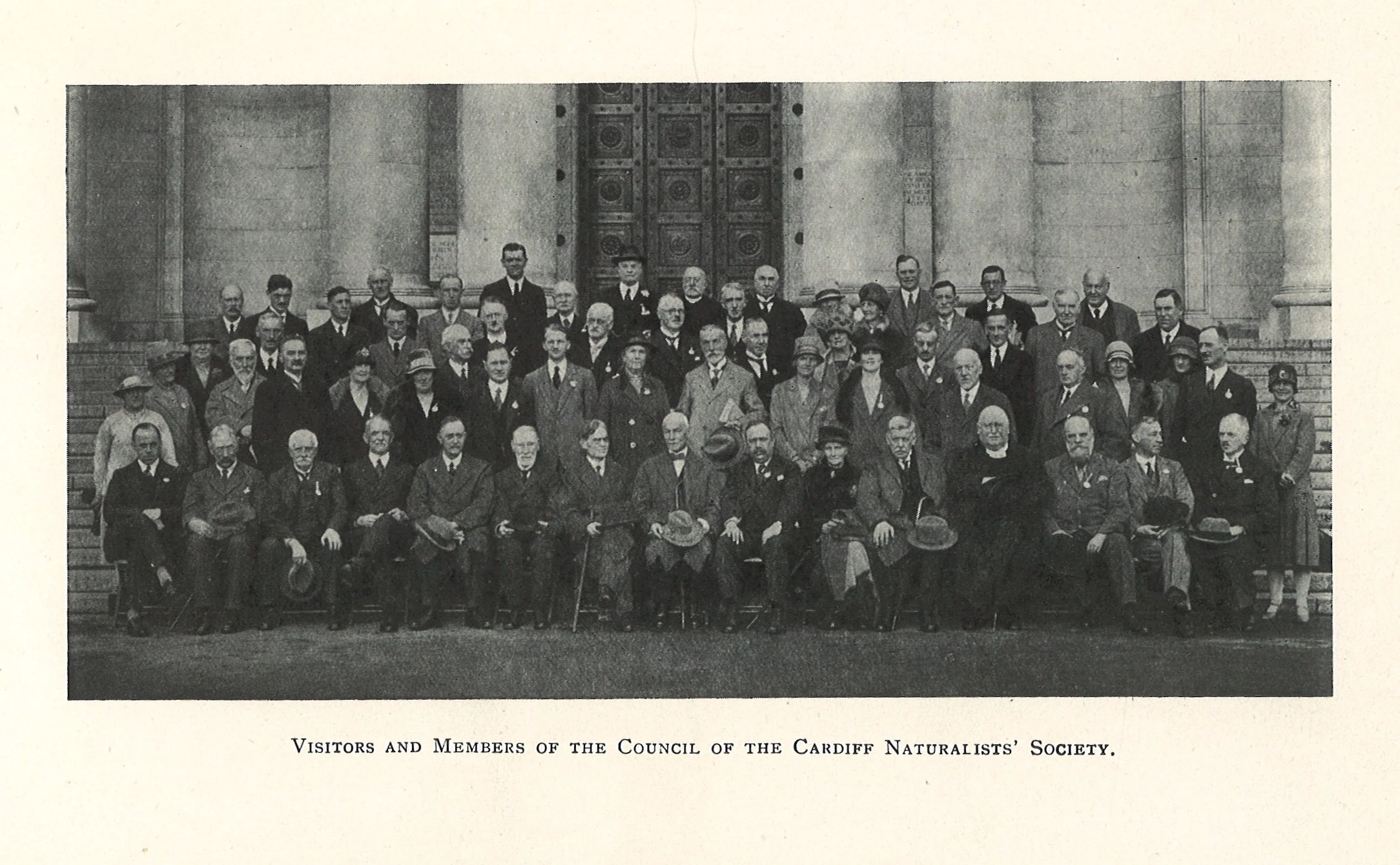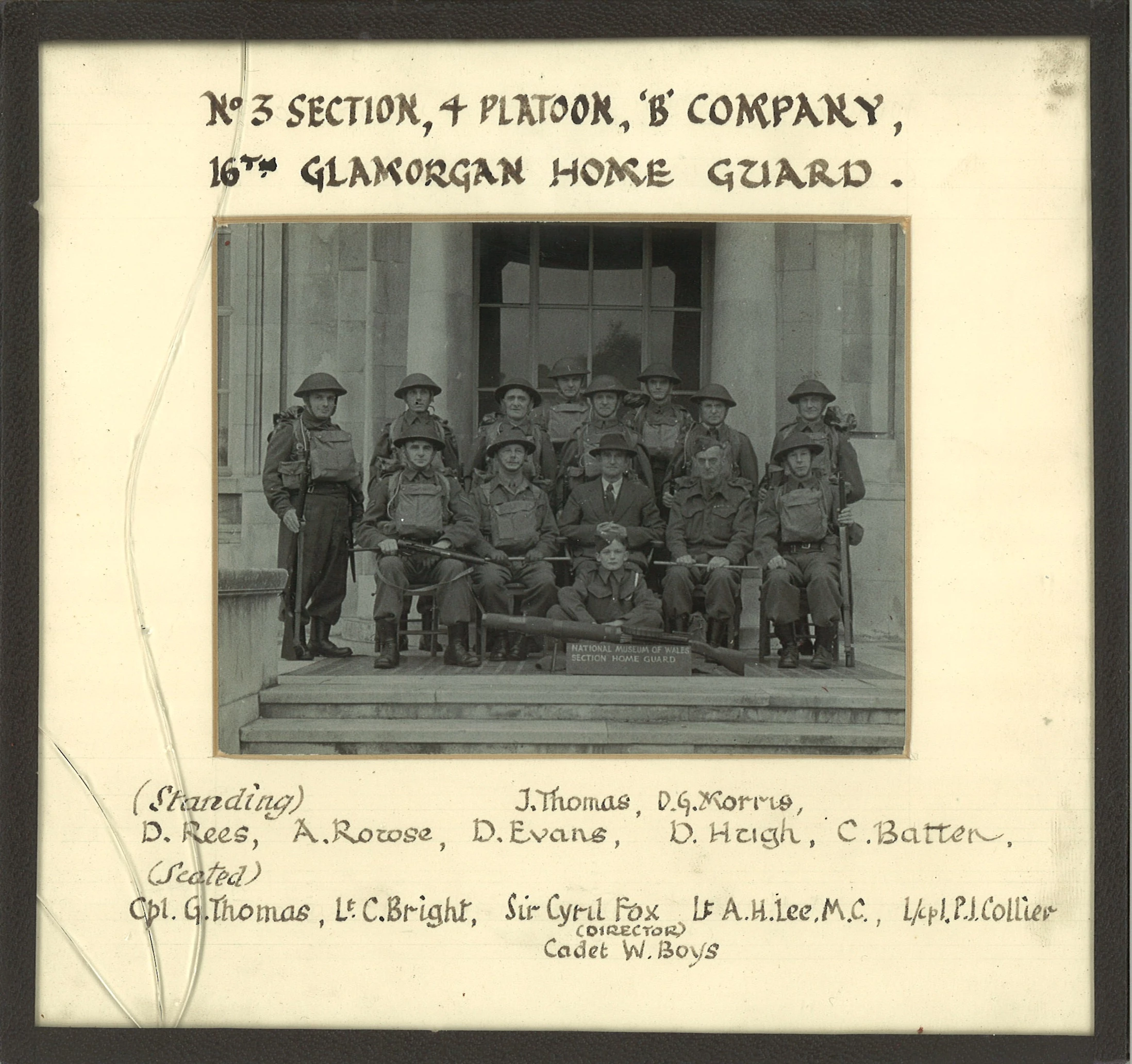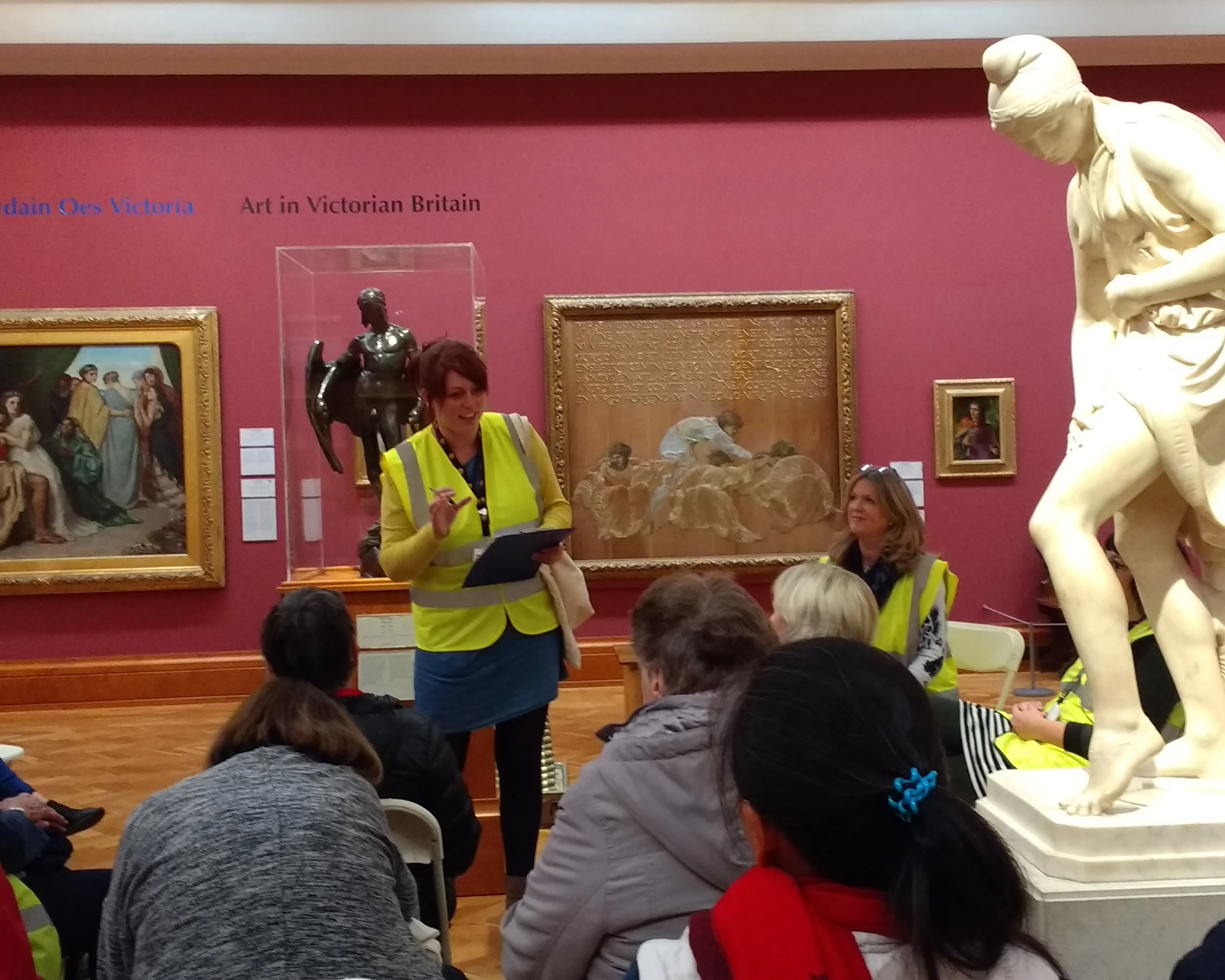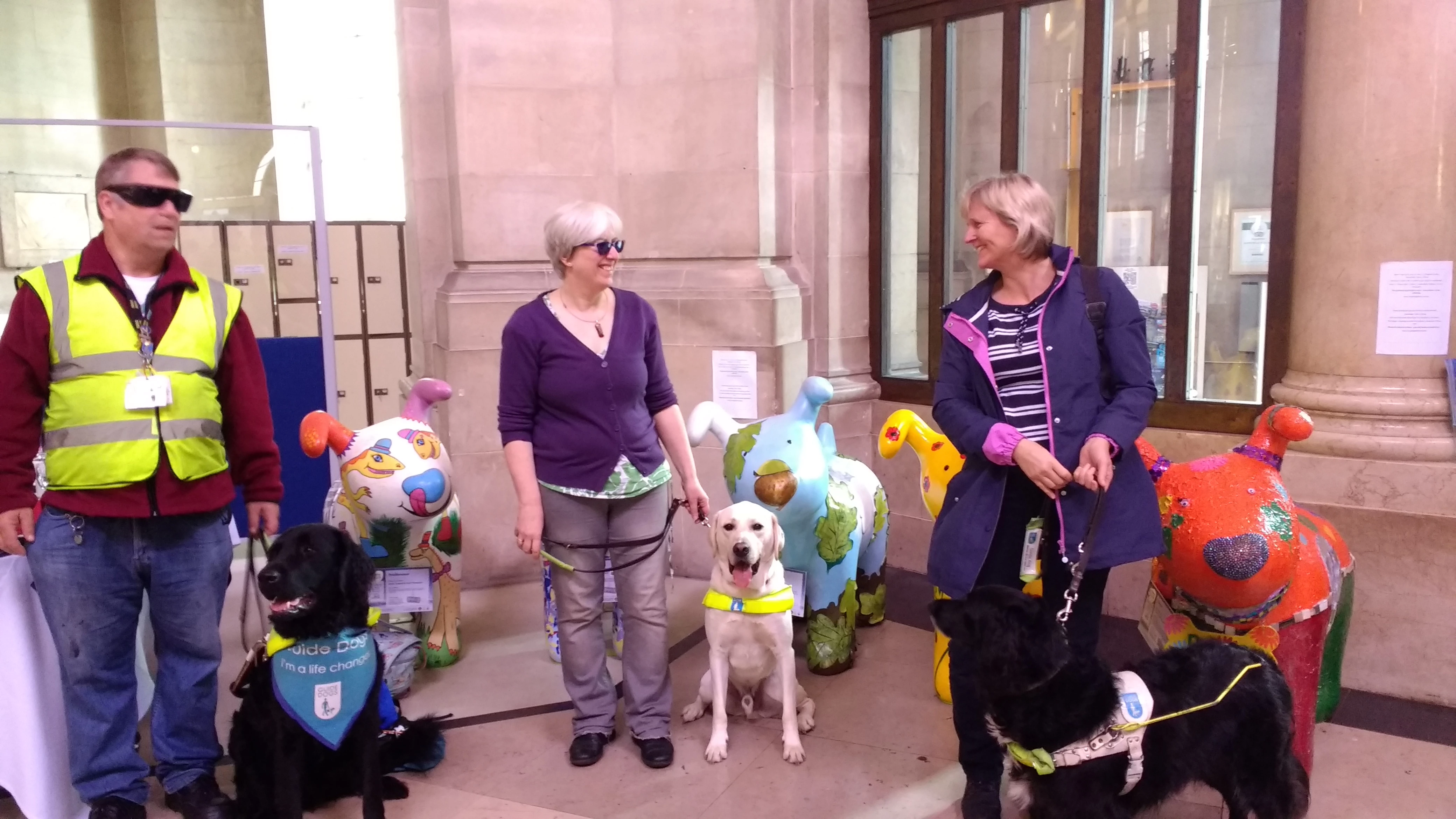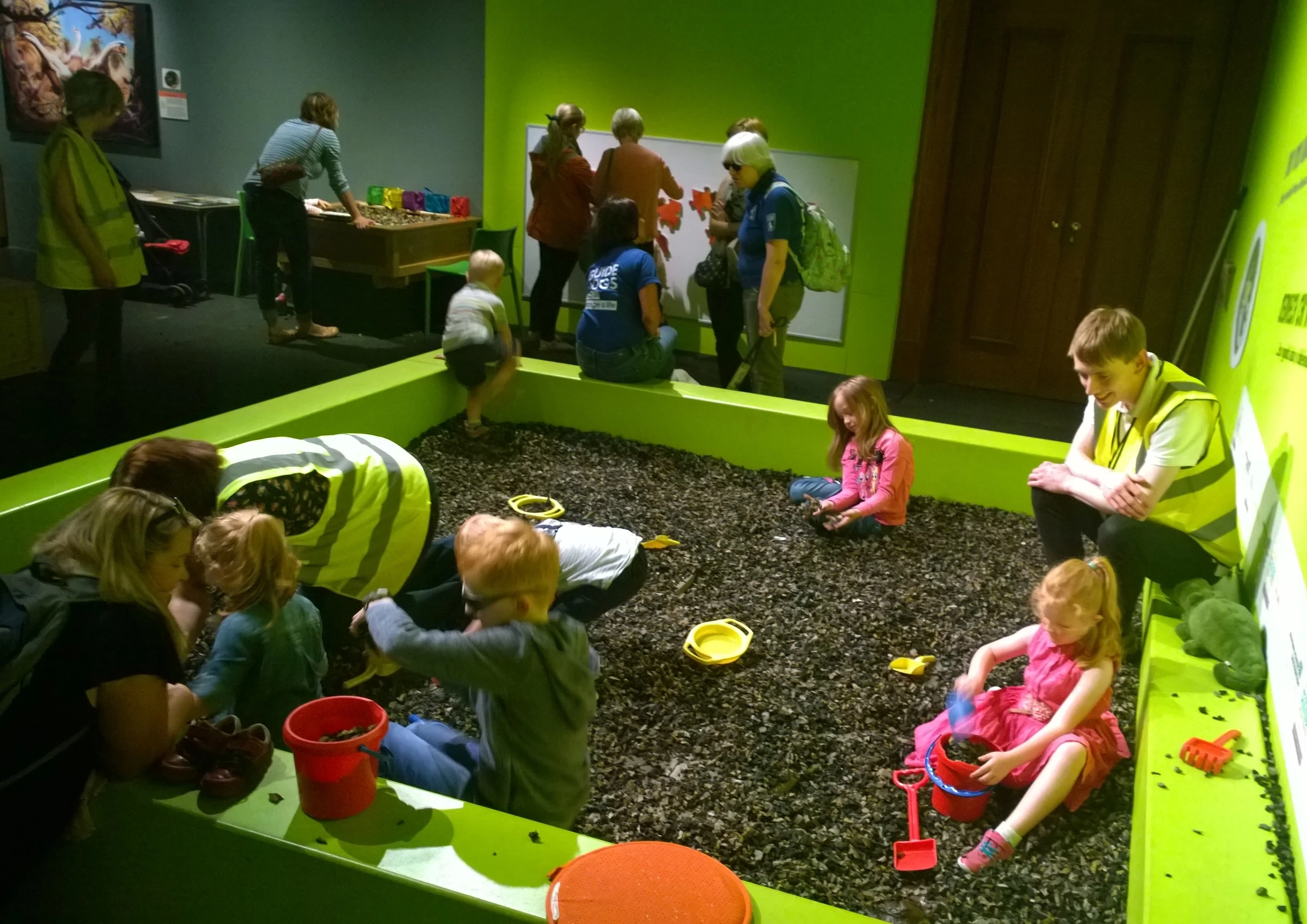Hi Everyone! Uri Guide Dog here, the new doggie bloggist taking over from my big bro Arnie, who’s now retired. I’ve been getting to know National Museum Cardiff very well as it’s one of my mum’s favourite places EVER!
We went to the Museum’s audio tour about Victorian art recently. The paintings and sculptures were beautifully described by the human guides. I was listening intently, even if it did look like I was having a little snooze next to mum. That’s just my listening face.
Anyway I had the chance to meet up with a few colleagues, Guide Dogs Ruby and Alfie, who were also keeping their two-leggeds safe. But we were surprised to find other dogs at the Museum!
I should have known something was up as soon as I arrived… Outside, after a doggie relief moment, I bumped into a colourful dog just sitting on the grass! A beauty, too! I couldn’t believe my luck! But she didn't respond to my waggy tail or my friendly bow. Rude, I thought, but I took a sneaky selfie anyway. Then, inside, I was even more surprised to find a whole pack of multi-coloured pups! I met Oakly, Abi, Smileosaur, Percy and Doris.
Mum explained these are ‘Snowdogs’, and that just like me these are helping dogs too. Except they are made of fiberglass, not fur. They have been made as part of an appeal to help Tŷ Hafan, the children’s hospice in Wales. These sculptural dogs have been decorated by local artists, schools and community groups, and you can follow the Snowdogs: Tails in Wales trail to find them all around Cardiff and the Vale!
As we sat next to the dogs a little girl came up to say hello. She gave me a cuddle and said she was from Marlborough Primary School and had actually helped decorate Percy the pup! Everyone in her class had put a fingerprint on a red background to create a flower pattern on their dog. She was very proud of their work. I told her Percy is PAW-SOME. He really is.
Apparently the Snowdog was chosen because it features in a film, based on a character created by Raymond Briggs. The Snowdog helps a boy deal with the loss of his pet dog by taking him on a magical adventure.
The pack of Snowdogs are going to be sold at auction after the public exhibition and trail finishes. The money raised will help support lots of children and their families, proving that Guide Dogs are not the only dogs who change lives. Good job guys!
The Museum's next Audio Description Tour takes place on 7th December
